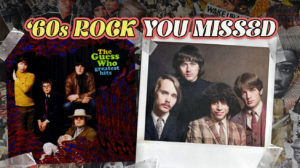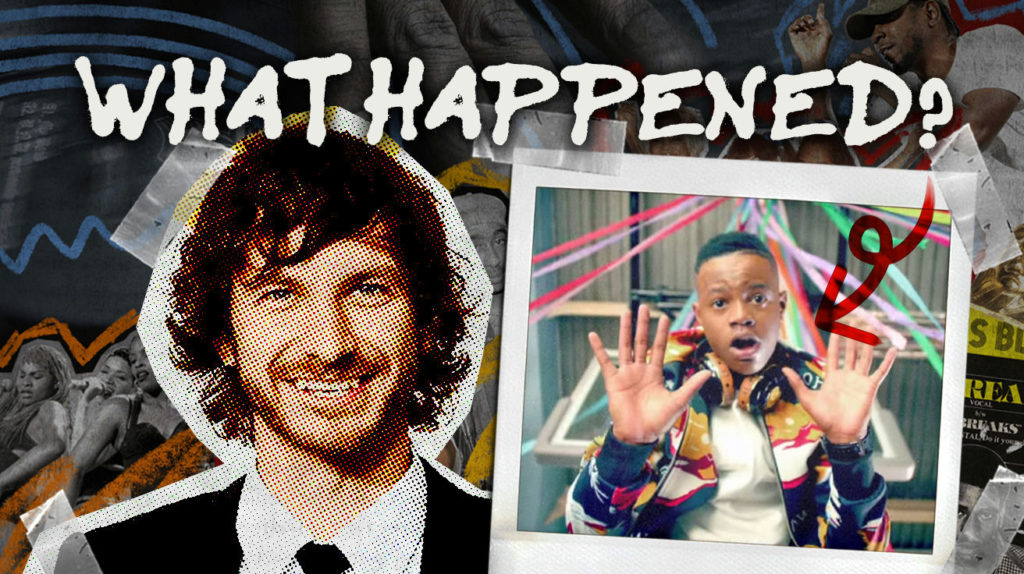
Fame in pop music often resembles that neighbor’s swimming pool you snuck into as a teenager—thrilling, forbidden, and usually over before anyone notices you were there. One-hit wonders live in this fleeting splash of attention, creating cultural artifacts that somehow outlive their creators’ momentary celebrity. They’re like those perfect Polaroids capturing summer nights that feel eternal despite lasting only hours—preserved moments of artistic lightning that refused to strike twice.
The fascination centers on cultural archaeology—digging through these musical fossils to understand what makes certain songs embed themselves in our collective memory like emotional shrapnel. These songs work as time machines, whisking listeners back to first kisses, road trips, or that summer job that somehow defined everything that came after.
26. Spirit in the Sky (Norman Greenbaum)
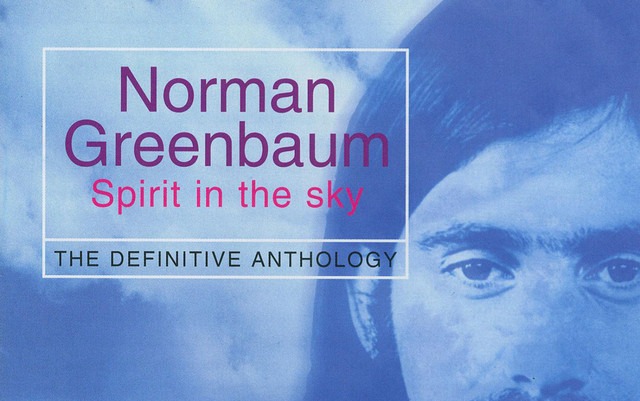
Greenbaum created the perfect sonic paradox—a Jewish artist crafting one of the most recognizable Christian-themed rock songs in history through fuzz pedals and handclaps. His 1969 track demonstrates how singular creative moments can sustain entire careers, generating ongoing income through film placements and advertisements decades after its release.
The song’s distinctive guitar tone and cosmic spirituality continue finding new audiences through cultural recontextualization—appearing everywhere from Apollo 13 to Guardians of the Galaxy. Its journey represents the strange immortality achieved by certain compositions that somehow remain perpetually contemporary despite their clear vintage markers.
25. Tubthumping (Chumbawamba)

Before becoming the ultimate sports arena anthem, Chumbawamba spent fifteen years making politically charged anarchist punk that record executives wouldn’t touch with hazmat gloves. They released a song about drinking and resilience that sounded like a pub crawl transformed into sonic warfare, and suddenly they were unavoidable.
The irony wasn’t lost on this collective of political radicals who found themselves with a worldwide hit celebrating the very working-class pub culture they championed. Their one mainstream moment provided a platform for their activism while demonstrating the strange alchemy that sometimes transforms underground artists into brief commercial phenomena—like watching your rebellious friend suddenly become prom king.
24. Barbie Girl (Aqua)

Aqua’s plastic fantastic anthem infiltrated global consciousness in 1997, creating an earworm so potent it should have been classified as a biological weapon. The Danish-Norwegian group crafted a perfect novelty hit—immediately recognizable, mildly controversial, and impossible to take seriously enough to hate despite its ubiquity.
The song’s recent resurrection during Barbie’s cinematic domination demonstrates how one-hit wonders can experience unexpected second lives through cultural reference points. These songs become dormant cultural viruses, waiting for the right nostalgic trigger to reactivate in the collective consciousness—proving that sometimes commercial extinction merely hibernates.
23. Dancing in the Moonlight (King Harvest)

King Harvest bottled pure musical joy in 1972, creating three minutes of warmth that continues radiating good vibes like emotional infrared. Their composition strikes that perfect balance between memorability and mood enhancement—distinctive enough to recognize instantly but mellow enough to enhance experiences without demanding center stage.
The track’s continued appearance in films, commercials, and playlists demonstrates how certain songs achieve commercial immortality by hitting emotional frequencies that remain consistent across generations. Some compositions simply find the universal chord progressions of human experience, becoming permanent fixtures in our cultural soundscape regardless of their creators’ broader catalog.
22. Tainted Love (Soft Cell)

Soft Cell’s synthesizer reinvention of Gloria Jones’ obscure soul track created the perfect sonic document of romantic toxicity—mechanical yet emotional, cold yet desperate. Their arrangement transformed heartbreak into dancefloor catharsis, pioneering synth-pop’s unique ability to make emotional devastation feel paradoxically liberating – —a sound often shaped by iconic electronic instruments like those from Roland.
The British duo achieved broader UK success but remains internationally defined by this singular moment of electronic alchemy. Their hit demonstrates how cover versions sometimes eclipse their sources, creating cultural reference points that completely recontextualize existing material through technological and arrangement innovations.
21. Touch of Grey (Grateful Dead)

The Dead’s lone mainstream hit in 1987 came after twenty years of relentless touring and cultivating rock’s most devoted fanbase—a fanbase so committed they followed the band across the country, creating entire temporary economies around parking lot gatherings. Their chart success was a footnote to cultural significance already secured through entirely different means.
This anomaly demonstrates the profound limitations of framing musical success through traditional commercial channels. The Dead built an alternative model centered on live experience and community rather than units sold, creating a blueprint for sustainability that countless jam bands have since followed. Their success story suggests that sometimes the wisest career move involves sidestepping the hit-making machinery entirely.
20. Somebody That I Used to Know (Gotye)

Gotye crafted the perfect breakup anthem for the social media era—capturing that unique modern phenomenon of seeing exes continue their lives through digital windows after emotional connections disconnect. His haunting xylophone-driven duet with Kimbra resonated globally because it articulated the specific anxieties of maintaining digital proximity while emotional distance grows.
The Belgian-Australian musician’s deliberate retreat from the spotlight after global domination represents an increasingly rare artistic choice—prioritizing creative integrity over commercial exploitation. His decision to return to independent projects rather than chase diminishing commercial returns demonstrates how some artists prefer creative sustainability over mainstream visibility.
19. Bad Day (Daniel Powter)

Powter’s piano lament became the unofficial soundtrack to every reality TV elimination before we realized those shows were eating our culture alive. Recorded in 2002 but rejected by labels until 2005, “Bad Day” resonated by packaging disappointment in digestible three-minute therapy sessions. When American Idol adopted it as their goodbye anthem, it transformed into a cultural shorthand for failure wrapped in false optimism.
The song achieved that rare triple crown of commercial success: triple platinum status, digital sales records, and cultural ubiquity that ultimately suffocated its creator. Powter never again cracked the code, becoming living proof that timing and TV exposure can launch careers skyward only to leave artists floating in the commercial stratosphere with no way down or forward.
18. What Does the Fox Say (Ylvis)

Norwegian comedy duo Ylvis accidentally created the perfect specimen of internet-era novelty hits—a manufactured viral moment that spread through digital channels with pandemic efficiency. Originally conceived as a promotional joke for their TV show, the track’s absurdist animal sounds and committed performance created an irresistible meme factory.
Their viral moment demonstrates how the internet transformed one-hit wonder mechanics, accelerating both ascent and decline while removing traditional gatekeepers from the equation. The song’s deliberately disposable nature makes it the perfect artifact of digital-era fame—designed for momentary ubiquity rather than sustained artistic value.
17. All Along the Watchtower (Jimi Hendrix)

Calling Hendrix a one-hit wonder works like calling the Grand Canyon a hole in the ground—technically accurate but missing the entire point. His reinvention of Dylan’s song reached the Top 40, but his revolutionary approach to guitar playing literally rewired how generations approach the instrument, making chart success beside the point entirely.
Hendrix represents the ultimate rebuke to commercial metrics as artistic measurement. His technical innovations, performance style, and sonic exploration transformed music permanently despite limited commercial “hits.” His legacy reminds us that sometimes the most profound impact happens beyond Billboard’s narrow vision—in practice rooms, bedrooms, and studios where artists continue channeling his influence decades after his departure.
16. Feel It Still (Portugal. The Man)

Portugal. The Man’s unexpected mainstream breakthrough after seven albums of indie credibility demonstrates how “overnight success” often follows decade-long artistic development. Their retro-influenced earworm brought attention to a band that had spent years refining their craft outside mainstream visibility, creating the illusion of sudden emergence.
Their journey challenges conventional one-hit wonder narratives by placing commercial breakthrough within broader artistic continuity. Unlike typical flash-in-the-pan phenomena, their moment represented deserved recognition rather than formula-driven fluke. Their experience highlights the false dichotomy between commercial and artistic success—sometimes popularity simply catches up to quality after years of unfair obscurity.
15. O-o-h Child (Five Stairsteps)
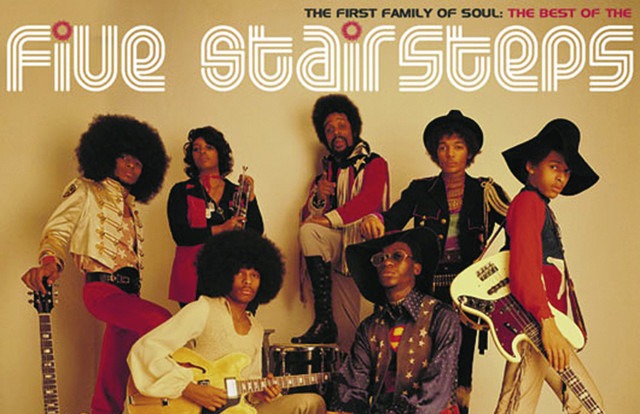
The Five Stairsteps created emotional rescue machinery disguised as a soul song, manufacturing hope through precisely engineered vocal harmonies and lyrical reassurance. Their optimistic promise that “things are gonna get easier” continues providing emotional scaffolding during difficult times, demonstrating music’s unique power as psychological infrastructure.
This family band’s enduring legacy through a single track illustrates how songs sometimes transcend entertainment to become emotional utilities—tools people reach for during specific psychological states. Their hit functions as a public service, explaining its continued resonance decades beyond its chart presence.
14. Watch Me (Whip/Nae Nae) (Silento)

Silentó created the perfect compilation of existing dance moves packaged for maximum viral potential, building a career-launching hit through curatorial genius rather than dance innovation. His track became the embodiment of social media’s participatory culture—content designed specifically for users to reproduce, modify, and distribute through their own performances.
The song’s trajectory from school dance phenomenon to cultural footnote demonstrates the accelerated lifecycle of dance trends in the social media era. These movements spread faster and disappear quicker than their pre-internet counterparts, creating careers that rise and fall with algorithmic efficiency that makes traditional one-hit wonder cycles look glacial by comparison.
13. Teach Me How to Dougie (Cali Swag District)

Cali Swag District achieved the perfect alchemy of dance instruction and hip-hop credibility, creating a tutorial track that made complex movement accessible while maintaining enough authenticity to avoid cringe territory. Their formula worked too well—creating a dance more memorable than its creators.
The track’s cultural impact was tragically complicated by member M-Bone’s 2011 murder, cutting short potential follow-up success. Their hit represents the double-edged sword of dance crazes—immediate cultural impact but notoriously difficult careers to sustain once the physical trend inevitably evolves while the song remains static.
12. Who Let the Dogs Out (Baha Men)
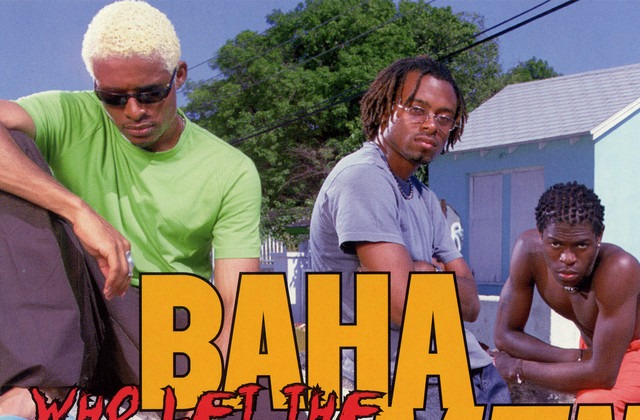
This sonic contagion colonized sporting events, children’s parties, and radio stations with military efficiency, creating a cultural earworm that proved impossible to exterminate. The Baha Men rode their inexplicable hit to Grammy glory before disappearing faster than free food at an office party, leaving behind only their eternal musical question.
The track represents peak novelty song physics—maximum cultural saturation followed by equally rapid depreciation. Yet its continued appearance at sporting events nearly 25 years later demonstrates how certain compositions transcend their creators’ careers to become cultural infrastructure—like architectural features we no longer consciously notice but that shape our experiences nonetheless.
11. Panda (Desiigner)

Desiigner’s trapped-out automotive fantasy demonstrates how streaming platforms transformed the one-hit wonder ecosystem, creating new pathways to both overnight success and sustainable careers outside traditional metrics. His Brooklyn-via-Atlanta flow achieved Billboard dominance and five-times platinum certification before his career seemingly evaporated from mainstream view.
Yet behind the apparent commercial disappearance lies a modern success story—millions of social media followers, brand partnerships, and diversified income streams that traditional hit-or-miss metrics fail to capture. His journey illustrates how digital-era artists can transform momentary viral moments into sustainable careers through audience ownership rather than hit replication.
10. The Middle (Zedd, Maren Morris & Grey)

This meticulously engineered collaboration demonstrates contemporary pop’s assembly-line approach to hit creation—multiple songwriters, producers, and potential vocalists auditioned like components in precision manufacturing. The track’s journey through twelve different vocalists before landing with Morris reveals the industrial precision behind seemingly organic pop moments.
The song’s commercial formulation challenges traditional notions of artistic authenticity while delivering undeniable results—Grammy nominations, platinum certifications, and inescapable radio presence. Its success represents modern pop’s collaborative construction model, where specialists combine expertise to manufacture emotional responses with clinical efficiency.
9. Give It Up (Public Enemy)

Public Enemy’s revolutionary political hip-hop exploded like a sonic Molotov cocktail into America’s cultural consciousness, fundamentally altering the landscape regardless of chart positions. Their impact transcended radio metrics, instead measuring success through their ability to articulate rage against institutional racism and inspire political awakening in listeners across racial lines.
Chuck D and Flavor Flav created music designed to challenge, confront, and change. Their legacy reminds us that artistic success takes many forms, and some of the most vital cultural contributions deliberately operate outside mainstream commercial frameworks, prioritizing truth over accessibility.
8. Beverly Hills (Weezer)
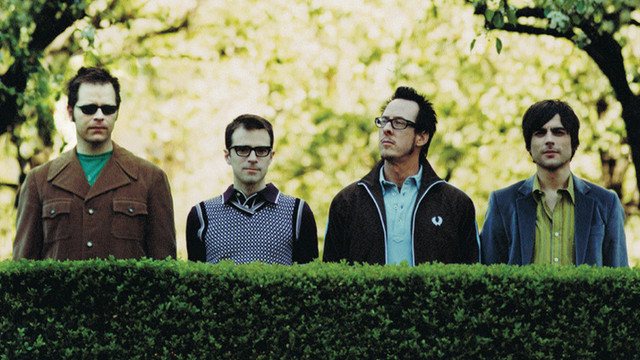
Weezer’s journey from indie darlings to commercial breakthrough to critically divisive veterans demonstrates the strange alchemy of sustained relevance. Their 2005 chart peak with “Beverly Hills” represents just one chapter in a career spanning decades, multiple creative reinventions, and a fanbase whose relationship with the band resembles a tumultuous marriage more than casual fandom.
Rivers Cuomo and company reveal how artists can maintain cultural relevance without consistent commercial dominance, building a career on cult devotion rather than hit-making formulas. Their longevity stems from something more sustainable than chart success—an authentic artistic voice that connects deeply with enough listeners to sustain decades of creative exploration.
7. Brandy (You’re a Fine Girl) (Looking Glass)

Looking Glass crafted the perfect maritime melodrama, telling Brandy’s tavern tragedy with such narrative precision that listeners can practically smell the harbor and taste the whiskey. Their 1972 chart-topper created a character so fully realized that she transcended the song to become cultural shorthand for romance sacrificed to calling—the girl left behind while opportunity sails away.
The song’s narrative completeness partly explains why the band struggled to replicate its success—they had inadvertently created a perfect short story that needed no sequel. Its continued cultural presence demonstrates how narratively satisfying compositions sometimes achieve immortality regardless of their creators’ subsequent commercial disappearance.
6. I’m Awesome (Spose)

Spose turned self-deprecation into viral gold, creating the perfect satire of hip-hop’s obsession with success signifiers while paradoxically achieving the very fame he mockingly celebrated. His humorous take on mediocrity struck a chord in an era when aspirational content dominated social media, offering refreshing authenticity through ineptitude.
The Maine rapper never attempted to replicate his viral moment, instead leveraging his brief spotlight into regional sustainability. His path demonstrates how modern artists can transform momentary attention into career longevity through authenticity and realistic expectations—building devoted local followings rather than chasing the increasingly elusive second hit.
5. Macarena (Los Del Rio)

This cultural pandemic infected global dance floors with unprecedented efficiency, creating a ritual so universal it temporarily united grandparents and kindergarteners in synchronized arm movements. The Spanish duo’s unlikely global takeover demonstrates how dance crazes transcend language barriers, creating participatory phenomena that spread through physical mimicry rather than lyrical understanding.
The song’s fourteen-week Billboard domination in 1996 and continuing presence at weddings demonstrate the strange immortality achieved by tracks that create physical rituals rather than just sonic experiences. “Macarena” works as a social algorithm—a set of embodied instructions that continues executing decades after its initial programming. These universally recognized songs often serve as the soundtrack to major gatherings, much like the anthems that define every music festival.
4. Old Town Road (Lil Nas X)

Lil Nas X engineered the perfect modern hit—a genre-blending experiment that weaponized controversy, meme culture, and strategic remixes to achieve unprecedented chart dominance. His country-trap hybrid reveals how thoroughly digital natives have rewritten hit-making formulas, bypassing traditional gatekeepers through algorithm manipulation and viral marketing.
His subsequent commercial success with multiple chart-toppers demonstrates how modern artists can transcend one-hit wonder status through cultural fluency rather than musical formula replication. His career represents gen-Z’s entrepreneurial approach to fame—treating music as just one element in a broader brand strategy that includes provocative visuals, strategic controversy, and authentic identity politics.
3. Absolutely (Story of a Girl) (Nine Days)

When Nine Days unleashed their infectiously earnest rock in 2000, they captured that precise moment before pop-punk fully commercialized but after grunge had exhaled its last angst-filled breath. Their perfect storm of accessibility caught lightning in a three-minute bottle, creating a song that radio programmers couldn’t resist but a career they couldn’t sustain.
The band discovered the brutal truth about music industry physics—momentum requires constant force, and one push rarely carries artists through the endless demand for follow-up hits. Their story serves as a perfect case study in how the machinery of mainstream music chews through acts, extracting the easily digestible bits before moving on to the next potential hitmaker.
2. Prey for You (Jaron)

This track illuminates the difference between technical chart appearances and actual cultural impact—like that person at parties who claims they’re “kind of famous” but nobody can pinpoint why. The song achieved the statistical benchmarks for hit status without embedding itself in cultural memory, raising uncomfortable questions about what constitutes meaningful artistic success.
Jaron’s fleeting moment demonstrates how the traditional metrics of music industry success often fail to capture what actually matters—cultural resonance that extends beyond momentary chart mathematics. It highlights the difference between songs that function as background noise versus those that become emotional landmarks in listeners’ lives.
1. Bitter Sweet Symphony (The Verve)

The Verve created rock’s most expensive sample clearance cautionary tale, crafting a perfect anthem of existential frustration that became a legal nightmare. Their orchestral masterpiece demonstrates how creative brilliance can be undermined by music industry mechanics—original composition tangled with intellectual property restrictions that nearly erased its creators from their own legacy.
Richard Ashcroft’s signature track finally returned to its creators in 2019 when Mick Jagger and Keith Richards relinquished their royalty claims, providing rare justice in an industry built on exploitation. The song’s journey represents the bitter complexities of creating art within commercial frameworks—how even monumental creative achievements can be reduced to legal disputes and financial algorithms.




